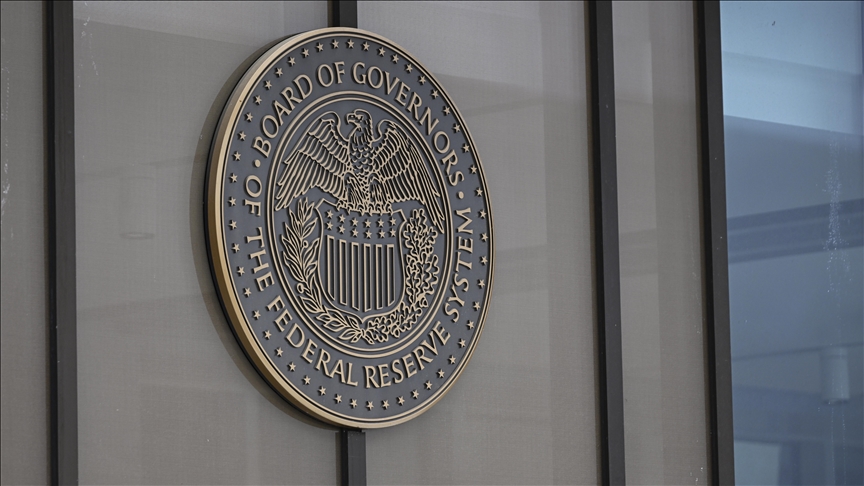ISTANBUL
The Federal Reserve does not need more monetary tightening as inflation in the US is “sufficiently moderating,” according to an expert.
“As expected, the Federal Open Market Committee paused hikes at the September meeting, while keeping up its slightly hawkish rhetoric in the post-meeting press conference,” Martin Wurm, a director at Moody’s Analytics, told Anadolu in an email interview.
“Despite the committee’s updated projections indicating another hike later this year, we anticipate that the Fed funds rate has reached its terminal range of 525-550 basis points for the current tightening cycle. No additional tightening should be needed, because inflation is already sufficiently moderating,” he added.
The Fed on Wednesday skipped an interest rate hike for the second time this year, keeping the federal funds rate unchanged between the 5.25%-5.5% target range, the highest in 22 years.
The bank made a total of 11 rate hikes since March 2022 to tame record inflation that climbed to its highest level in more than 40 years.
After soaring to 9.1% in June last year, annual consumer inflation dropped to 4% in May and 3% in June this year, but came in at 3.2% in July and climbed to 3.7% in August.
“However, since inflation has proven more persistent than anticipated earlier in the year, we expect that the Fed will not cut rates before summer 2024, when inflation will approach its 2% target range,” said Wurm.
The Fed expects an additional rate hike in one of its two remaining meetings this year, while it indicated fewer rate cuts for next year, according to its projection materials released Wednesday.
‘Economy performing better than potential’
The bank, in addition, revised its 2023 growth forecast for the American economy to 2.1%, up from the previous June estimate of 1%.
Wurm said the economy is performing well and he estimates real GDP to grow around 2.5% in the third quarter year-on-year, faster than the estimated potential growth rate of 2%.
“In a full-employment economy like this one, this pace would typically fan inflation. But inflation continues to moderate. Trimmed-mean measures of inflation, which truncate those goods and services whose price movements are especially volatile – both up and down – suggest that inflation already has nearly normalized,” he explained.
“This surely overstates the case but provides solace that inflation is moving in the right direction. This combination of strong GDP and slowing inflation is largely powered by improving productivity gains.”
The expert said labor hours worked continue to throttle back as job growth slows and the hours a typical worker is putting in have declined, which is reflected in the hope for a soft landing.
Fed Chair Jerome Powell, in the post-meeting press conference, said he believes it is possible to achieve a soft landing – a situation where a central bank raises interest rates too much and too high that leads to an economic slowdown, but avoids a recession.
“I have always thought that the soft landing was a plausible outcome. That there was a path to a soft landing. It is also possible that the path has narrowed and widened apparently. Ultimately this may be decided by factors outside of our control, but I do think it is possible,” Powell said.
Risks on horizon
Wurm, meanwhile, emphasized that there are still risks regarding the outlook of the economy.
“Consumers, the US economy’s firewall, need to keep doing their part, and we expect they will. Real incomes are on the rise again, and the need to tap excess savings to maintain spending is diminishing,” he said.
“Concern that households have taken on too much debt is also largely misplaced. Total debt is up only 3.5% in the year ending in August, about the rate of inflation and less than income growth,” he added.
The expert stressed that higher global oil prices are expected to contribute to personal consumption expenditures headline inflation in the near-term, and they pose some risk to the consumer firewall.
With US oil benchmark West Texas Intermediate trading around $90 per barrel, average gasoline prices are approaching $4 per gallon in the nation.
The national average stood at $3.867 per gallon for regular gasoline as of Thursday, up 5% from $3.681 a year ago, according to figures from the American Automobile Association.
“Nothing is more corrosive on the collective psyche than having to pay more at the pump, and $4 appears to be a threshold in people’s thinking about their financial situations,” said Wurm.
“We do, however, not expect oil prices to rise much further, given the considerable cross-currents impacting oil demand and supply, such as Chinese demand and the Russian oil sanctions,” he concluded.

